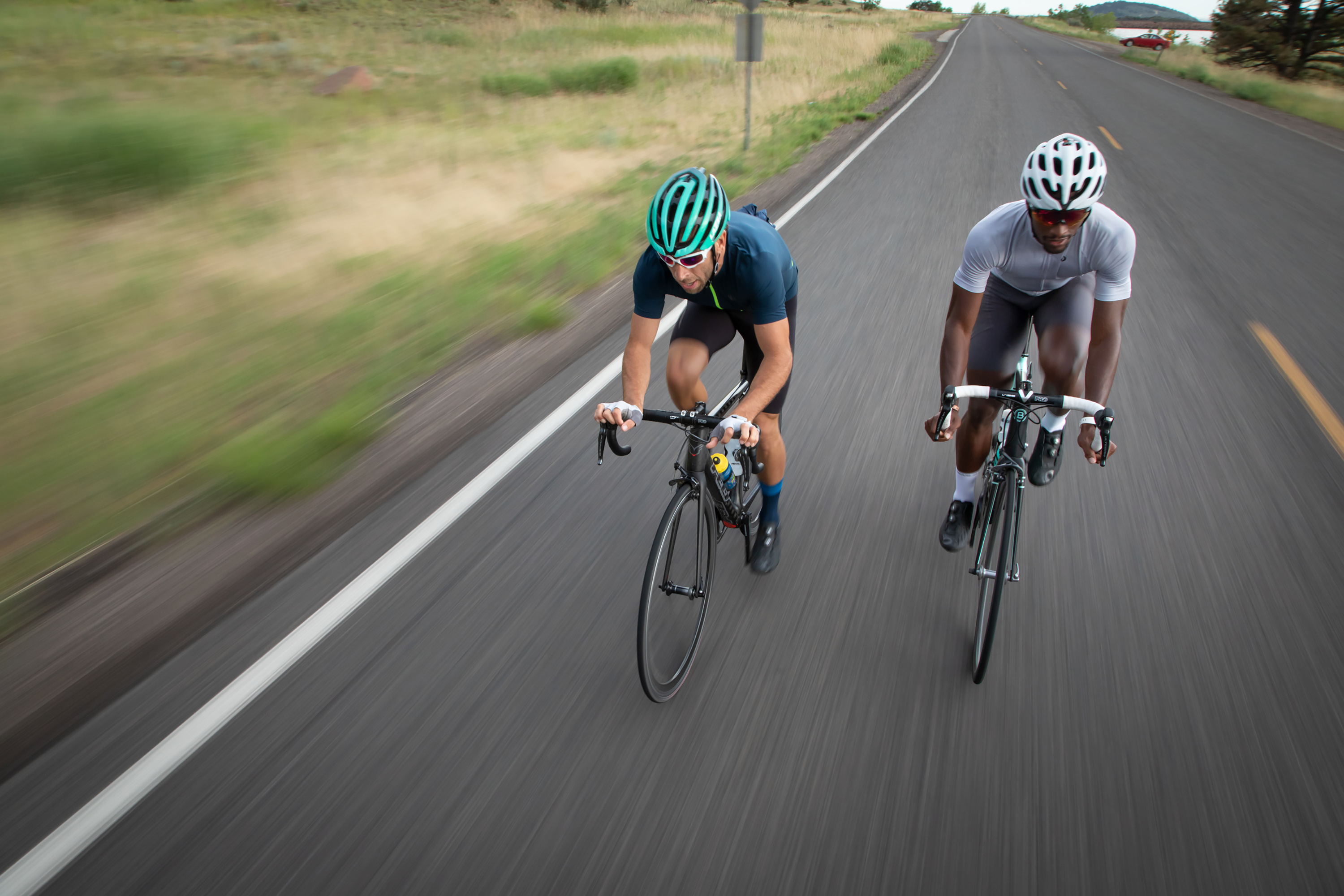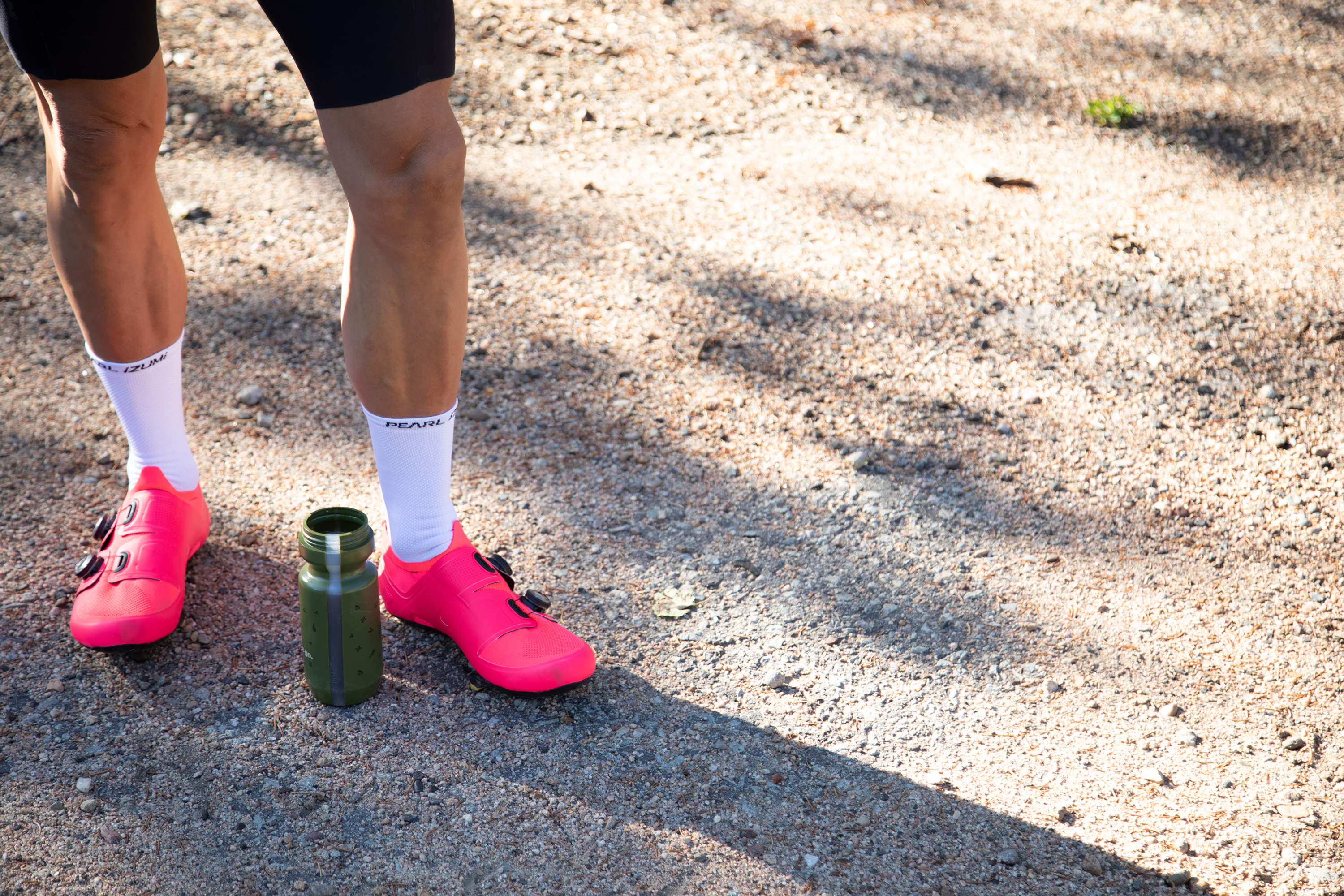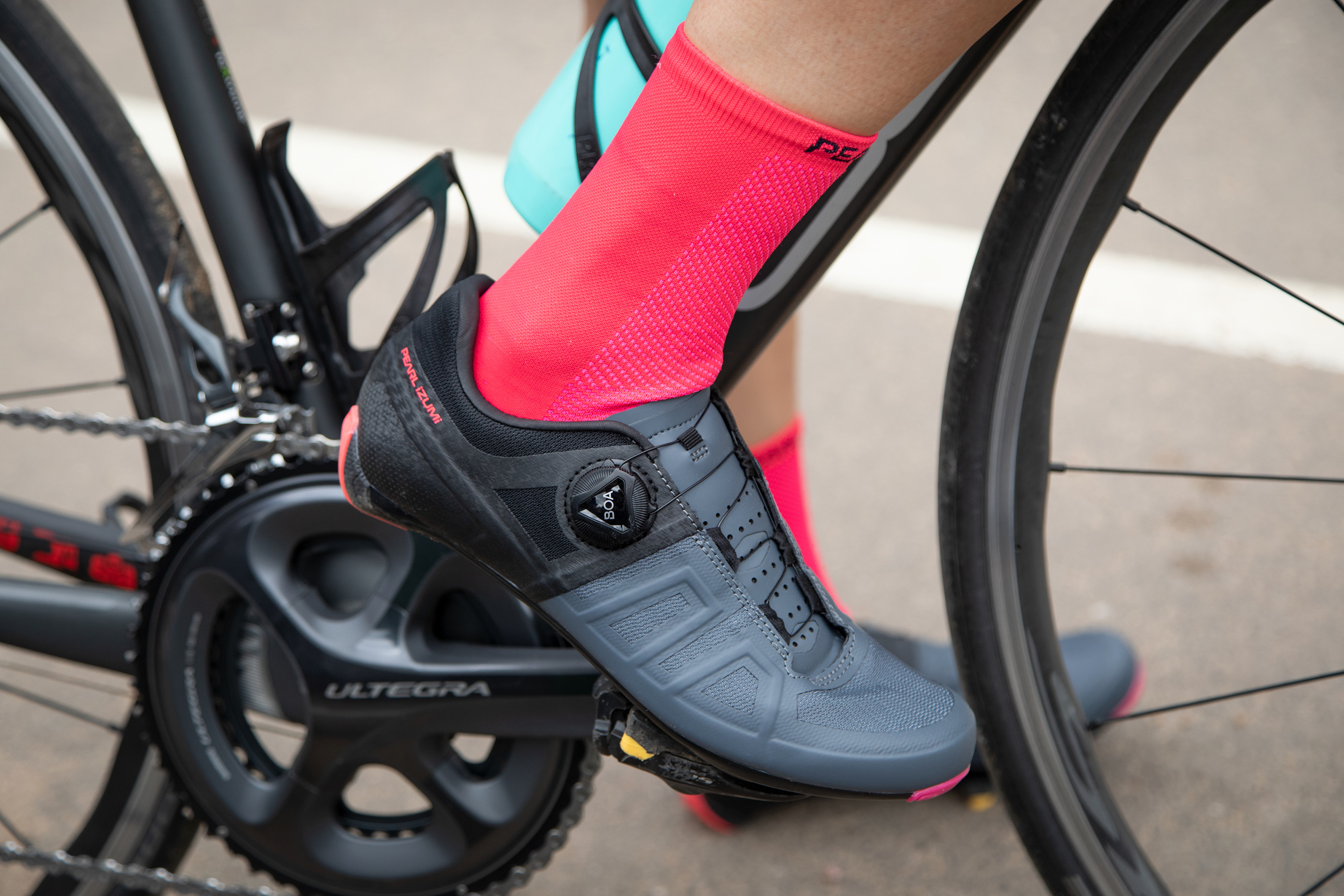How to Build Your First Road Cycling Kit
2020 is the unofficial year of the bike. Whether you’re cleaning cobwebs off the old 10-speed or were fortunate enough to land a sweet ride from a summer sale, cycling has never been more popular.
The bike is just the start of your journey. If you’re new to riding — or if it’s been 10 years since you’ve swung a leg over a top tube — we’ve seen a swell of new clothing and accessory innovations to take your riding to the next level. So we understand sorting through it all can feel overwhelming.
But little extra investment will reap dividends in the saddle and set you on the right path. So let’s get you outfitted for a fantastic future on the road.
Road Cycling Gear: Bibs or Shorts
Why You Need It
Nothing shouts public affirmation for cycling more than Lycra tights. While Lycra used to be reserved for only the most serious riders, these sleek wares have become saddle staples among even casual riders.
The padded chamois is made from layers of foam that cushion the bum, buffing out road vibrations. The chamois is held in place with Lycra panels that compress muscles for support and reduce chafing. Together, they allow the rider to pedal effortlessly through the miles.
How to Choose
Shorts or bibs — it’s a personal preference. Shorts stop at the waist. Bibs have straps that ride over the shoulder that hold the chamois in place and eliminate the waistband, reducing compression on the gut.
Yes, bib shorts can be a hassle to wrestle out of for a pitstop. Yet we still almost always reach for these on a road ride. Their compression supports tired legs and holds the chamois close to the body, providing an overall more comfortable fit.
Last year, we ranked PEARL iZUMi’s PRO Bibs as our favorites in our comprehensive review of the best bib shorts for men. The brand’s Attack Bib rolls many of these highlights over into a bib at half the cost. The fabric is recycled, the chamois is breathable, and it offers a budget-minded foundation to build your kit around.
Cycling bibs are meant to be worn without underwear. Awkward, maybe; comfortable, yes.
Pro tip: While black bibs used to be de rigueur, recently navy shorts have been on-trend, offering the same outfit simplicity as jeans and a T-shirt. They also complement whatever jersey and sock pattern you decide to pair with your kit.
Cycling Jersey
Why You Need It
Similar to the bib, the jersey’s north star is guided by the cleanest path through the wind. A proper jersey fits svelte, quickly wicks away moisture, is cut longer in the back for coverage, and has a row of pockets slung low over the back to provide easy access to supplies.
How to Choose
The jersey is also an opportunity to personalize your look. You’ll have reams of color options to sift through to mix and match with your socks and helmet, allowing you to dial in a look.
For men who want a less “race-y” look, PEARL iZUMi’s Tour Jersey is made from recycled water bottles and has a slightly relaxed fit. For warmer weather, women will appreciate the mesh side panels found in the Sugar Jersey.
Both are available under $80, meaning more cash in the bank for supplies to stow in those back pockets.
Pro tip: A short-sleeve shirt jersey with a full zipper pairs with arm warmers for three-season coverage (more on that below). It allows you to spill heat on the climb and batten down for the descent.
Bike Helmet
Why You Need It
The best thing to bring to any adventure is a sound mind. Protect your thinker with a good helmet.
How to Choose
These days, helmets are offered with Bluetooth connectivity, lights, and even turn signals. Cool tech aside, a good helmet is a helmet you want to wear, so fit is king.
A properly fitted helmet should fit snug, securely around the head and under the chin. Straps should wrap without chafing the ears or pinching under the chin. If you ride in hotter temperatures, look for a lid with ample air circulation and padding to mop up sweat, preventing it from dripping down your face.
Innovations in crash protection, like MIPS, have been shown to reduce rotational forces on the brain in a crash. Often, these helmets may cost a little more, but they provide strong protection and fit in a lightweight package.
Pro tip: Buy your helmet at your local bike shop. This allows you to try on multiple helmets to find the one that fits best.
Gloves
Why You Need It
Riders have three contact points with the bike: the foot, the butt, and the hands. A good pair of gloves have a touch of padding, damping road vibration.
PEARL iZUMi’s Elite Gel Gloves (for men and women) use a contoured gel to pad the palms. The backside is breathable, and a simple Velcro strap keeps them around the wrist.
How to Choose
Choose fingerless gloves for hot summer days. For cooler rides, use a pair of fingered gloves that block wind and offer insulation. Take it from us, cycling with cold, wet hands is like enduring the ice bucket challenge — only for hours, not seconds. Gloves keep the digits nimble enough to use the levers.
Pro tip: More padding doesn’t always mean more comfort. Too much padding can prevent proper positioning and cause fatigue. Choose a glove that fits snug (without constricting) and provides a little padding where your hands rest on the bars.
Socks
Why You Need It
Socks aren’t just another way to dial in your look; the bright colors help you be seen by drivers on the road. They come in many lengths, but, thanks to Lance Armstrong, the current trend has a bias for midcalf length.
How to Choose
Socks should be comfortable, stay put, and meet the conditions you’re riding in. Thin and airy are good for hot summer days; wear a bit thicker socks for cooler days.
PEARL iZUMi offers several different styles, performance levels, and colors for both men and women to choose from. The men’s and women’s Elite sock offers a clean look with several different colors to match your style.
The brand says these socks balance all-day comfort with durability. Plus, they’re made with REPREVE yarn from recycled water bottles, so you can feel good knowing you’re helping reduce environmental impact.
Pro tip: On hot riding days, your feet can swell in as little as 30 minutes. Socks that are too tight or too thick can constrict blood flow and cause discomfort. Choose a well-fitting sock that offers good breathability.
Shoes
Why You Need It
Linking the rider to the bike, a proper road shoe is stiff, transferring force from the legs to the road.
Uppers are made synthetic leather, knit, or mesh panels that breathe on hot rides and are easy to clean.
The shoe fastens around the foot using BOA mechanisms, Velcro straps, buckles, and good ol’ fashioned laces.
How to Choose
A well-fitting shoe will be snug–but not tight–with some room for the toes to wiggle. The heel should feel locked in the shoe’s counter and shouldn’t slip up or down.
Traditional road shoes have a sleek, firm outsole made of nylon or carbon fiber with pedal cleats mounted over the sole, making them efficient on the bike. But they can be uncomfortable to walk in.
This leaves many new riders asking, “Do I need a dedicated road shoe?” Purists will groan, but we say no. Many riders use one pair of shoes for both mountain and road cycling.
If “there can be only one” in your wardrobe, but you have two bikes in the stable, we recommend a gravel-friendly shoe, like PEARL iZUMi’s X-Alp. The brand says it is durable and walkable without sacrificing that road flare. The fashion police will give you a pass.
Pro tip: Traditional road shoe cleats are mounted to the sole through three bolts (while a mountain bike shoe uses a two-bolt mechanism). The shoe you choose will inform your pedal decision and vice versa.
Wind Vest or Jacket
Why You Need It
The cycling jacket’s goal is to keep you warm and dry, with “dry” being relative.
Unless you regularly ride in the rain, a jacket doesn’t need to be waterproof. A waterproof jacket will trap sweat on the inside, making you wet anyway. Instead, we almost always carry a water-resistant wind jacket treated with a durable water-repellent finish.
How to Choose
The fit should be snug and the material should be light. This simultaneously reduces wind flap and allows the jacket to stow away in a pocket. If you ride in town, wear reflective accents to catch the eye of passing drivers.
PEARL iZUMi’s Quest Barrier Convertible Jacket — women’s and men’s — is a good start. The brand says this relaxed-fit wind jacket sheds light rain and helps block the wind in unpredictable weather. As things heat up, the sleeves zip off and disappear in a jersey pocket and unpack with a big punch when the road tilts down and chill factor becomes real.
Pro tip: Less is more. If you’re new to riding, your instincts may have you reaching for an insulated jacket on the way out the door. Pedaling on the road generates a lot of heat that gets trapped inside the jacket. Instead, bring a pair of arm warmers to pair with your wind jacket.
Sunglasses
Why You Need It
They don’t just look cool, they protect the eyes from wind, glare, and the occasional incoming bug torpedo.
How to Choose
Choose a tinted lens with a minimal bridge over the nose for an unobstructed view of the road. Riding at night? A clear lens can prevent tired eyes while still providing the protection you need.
Pro tip: Choose a pair of glasses with multiple lenses: dark for sunny days, light tint for cloudy days, and clear for night rides (don’t forget your lights!).
Arm Warmers & Leg Warmers
Why You Need It
Rides often start early and end some 20 degrees later. Arm warmers and leg warmers slip over limbs, allowing you to adjust your thermostat as the temperatures change. They are easy to pull off and tuck away into the jersey with little fuss.
How to Choose
Like bibs and jerseys, arm and leg warmers come in a variety of sizes. Find the right fit for your guns, as you don’t want the warmers to slip off.
PEARL iZUMi’s Elite arm warmers and leg warmers are a popular choice for many riders. This year they’ve been updated with a water-shedding thermal fleece, keeping riders pedaling deeper into the shoulder seasons.
Pro tip: To help prevent them from falling down, layer arm and leg warmers under the jersey and bibs.
This article is sponsored by PEARL iZUMi. Check out the brand’s cycling gear here.
The post How to Build Your First Road Cycling Kit appeared first on GearJunkie.







